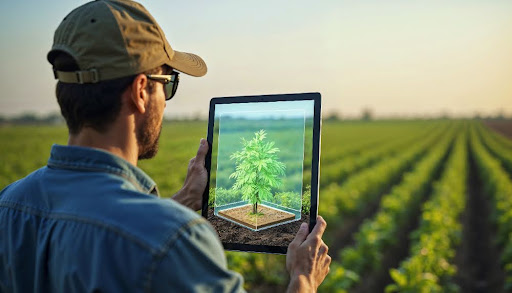As global temperatures rise and weather patterns become more erratic, the agricultural sector faces unprecedented challenges. Farmers must now adapt to changing environmental conditions while meeting the increasing demand for food. Climate smart agriculture technologies offer innovative solutions that not only enhance productivity but also ensure sustainability and resilience in farming. In this blog, we explore the benefits of adopting these cutting-edge technologies and how they are transforming agriculture.
What Are Climate-Smart Agriculture Technologies?
The three main objectives of climate-smart agriculture include productivity improvements, adaptation to climate change, and a reduction in greenhouse gas emissions. Climate-smart agriculture technologies include various tools and practices such as precision farming, resource-efficient irrigation systems, soil health monitoring, and weather forecasting applications. These technologies enable farmers to make the right decisions to optimize the use of resources and adopt sustainable practices according to their needs.
Key Benefits of Climate-Smart Agriculture Technologies
1. Resource Use Efficiency
One of the most important advantages of climate smart agriculture technologies is that they optimize the usage of resources like water, fertilizers, and energy. For example, advanced irrigation systems such as drip or sprinkler irrigation ensure precise application of water, which minimizes waste and conserves this precious resource. Similarly, soil health monitoring tools help in determining the actual nutrient requirements and reduce excessive use of fertilizers and their associated environmental impacts.
2. Increased Climate Change Resilience
Climate change presents grave threats to farming, including uncertain rainfall, droughts, and pest infestations. CSA technologies help mitigate these problems through data-driven information. Weather forecasting tools prepare farmers for extreme weather events, and pest detection systems help prevent crop damage, making them more resilient and productive.
3. Increased Productivity
These technologies would lead to higher yields with fewer inputs. Precision farming technologies apply data analytics and IoT sensors to monitor crop health and growth patterns. This can lead to interventions in good time, hence boosting productivity and preventing crop failure.
4. Environmental Impact Reduced
These technologies allow for sustainable farming practices, which drastically reduce the environmental footprint of agriculture. No-till farming, cover cropping, and integrated pest management are techniques that reduce soil erosion, increase biodiversity, and reduce chemical usage. These are compatible with efforts around the world to mitigate climate change while preserving soil fertility in the long term.
5. Adaptation to Diverse Farming Systems
Climate smart agriculture technologies are flexible enough to suit farming systems ranging from smallholder to large-scale agricultural enterprises. For example, smart sensors and mobile apps offer services to those farmers who sit in remote rural areas. This flexibility of CSA technologies provides benefits to any farmer in each context.
6. Cost saving
Although the investment in such technologies may be a bit high, the long-term cost savings are enormous. High profitability is also associated with efficient resource use, lower input costs, and reduced risks of crop loss. In addition, some governments and organizations offer financial incentives to encourage the adoption of CSA technologies, thus reducing the financial burden on farmers.
7. Contribution to Global Food Security
With the global population expected to continue growing, food demand is expected to rise dramatically. Climate smart agriculture technologies help meet this need by ensuring that farming practices are sustainable and efficient. Through increasing productivity and resilience, these technologies support global food security while protecting natural resources.
8. Empowerment Through Data-Driven Insights
Technology in agriculture empowers the farmer with rich data and insight. From crop monitoring in real-time to predictive analytics, these technologies help make the right decisions to reduce uncertainty in farm management and improve the whole process.
Conclusion
The adoption of climate-smart agriculture technology is no longer an option for farmers seeking the balance of productivity, sustainability, and resilience in farming. In that sense, the adoption ensures comprehensive response measures against climate challenges, conservation, and environmental stability with economic feasibility.
At ASQI, we are dedicated to transforming agriculture through innovative and sustainable solutions. By leveraging advanced technologies and expert advisory services, ASQI empowers farmers to embrace climate-smart practices, ensuring a brighter future for agriculture and the planet. Together, we can make farming resilient, sustainable, and prosperous.







